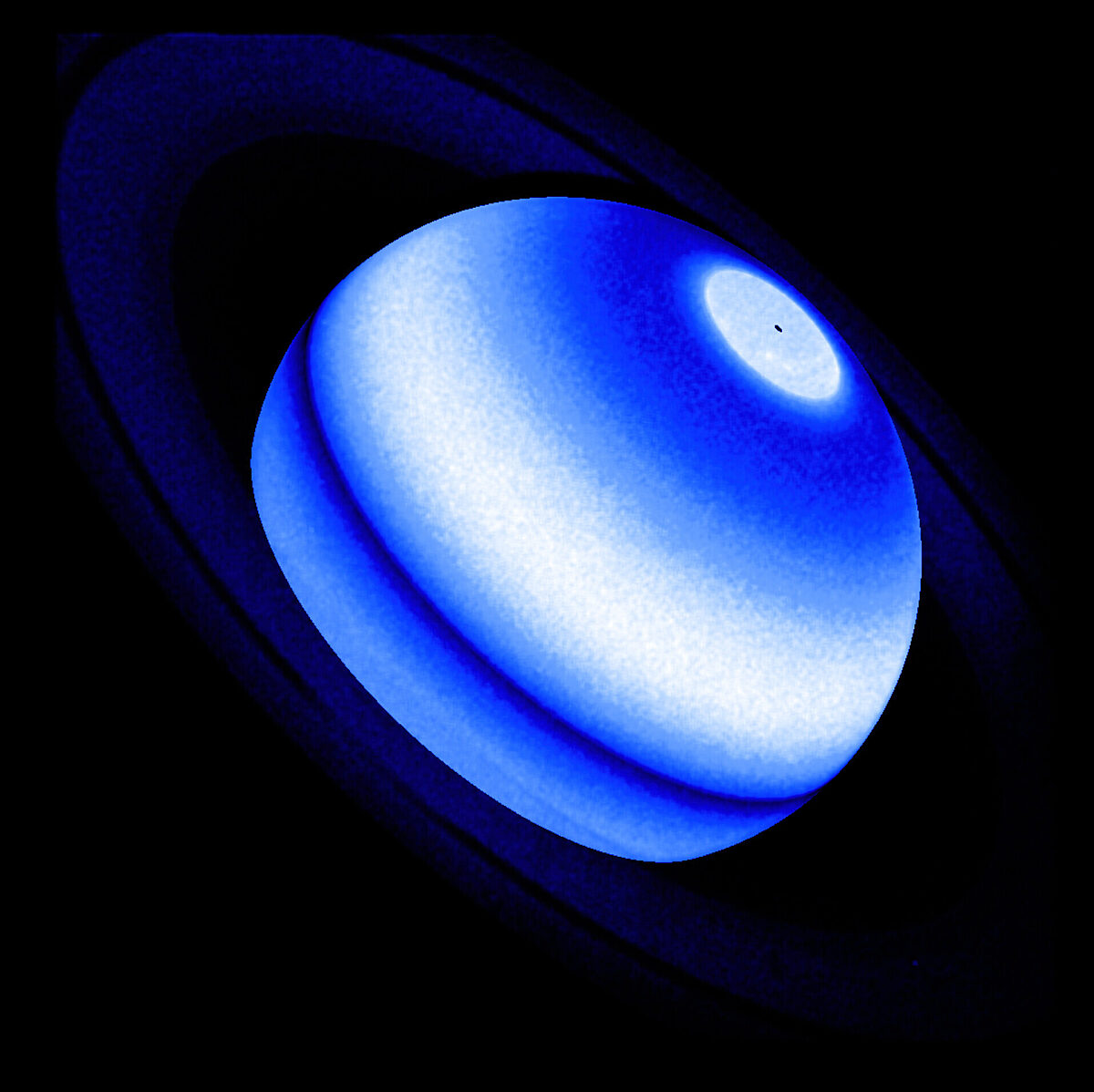Saturn's rings in UV from Hubble

From ESA:
The planet Saturn is easily recognizable for its opulent ring system that can easily be seen through a small telescope. Astronomers have now found that the rings are not as placid as they look: a rain of icy particles is affecting the giant planet's weather. It took observations of Saturn from the ESA/NASA Hubble Space Telescope and the retired NASA/ESA/ASI Cassini probe, in addition to the Voyager 1 and 2 spacecraft and the retired International Ultraviolet Explorer mission, to pull it all together.
The telltale evidence is an excess of ultraviolet radiation, seen as a spectral line of hot hydrogen in Saturn's atmosphere. The most feasible explanation is heating caused by icy ring particles raining down onto Saturn's atmosphere. This rain could be due to the impact of micrometeorites, solar wind particle bombardment, solar ultraviolet radiation, or electromagnetic forces picking up electrically charged dust.
A new study pulled together archival ultraviolet-light (UV) observations from four space missions that studied Saturn. This included observations from the two Voyager probes that flew by Saturn in the 1980s and measured the UV excess — at the time, astronomers dismissed the measurements as noise in the detectors. The Cassini mission, which arrived at Saturn in 2004, also collected UV data on the atmosphere over several years, and additional data came from the International Ultraviolet Explorer, launched in 1978, and from Hubble.
But the lingering question was whether all the data could be illusory, or instead reflected a true phenomenon on Saturn. The key to assembling the jigsaw puzzle came in the decision to use measurements from Hubble's Space Telescope Imaging Spectrograph (STIS). Its precision observations of Saturn were used to calibrate the archival UV data from all four other space missions. Four decades of UV data cover multiple solar cycles and help astronomers study the Sun's seasonal effects on Saturn.
By bringing all the diverse data together and calibrating it, it was determined that there is no seasonal difference to the level of UV radiation. The unexpected interaction between the rings and the upper atmosphere is now being investigated in depth, to define new diagnostic tools for estimating if distant exoplanets have extended, Saturn-like ring systems.
These results are featured in the paper published on 30 March 2023 in the Planetary Science Journal.


 Explore Worlds
Explore Worlds Find Life
Find Life Defend Earth
Defend Earth

